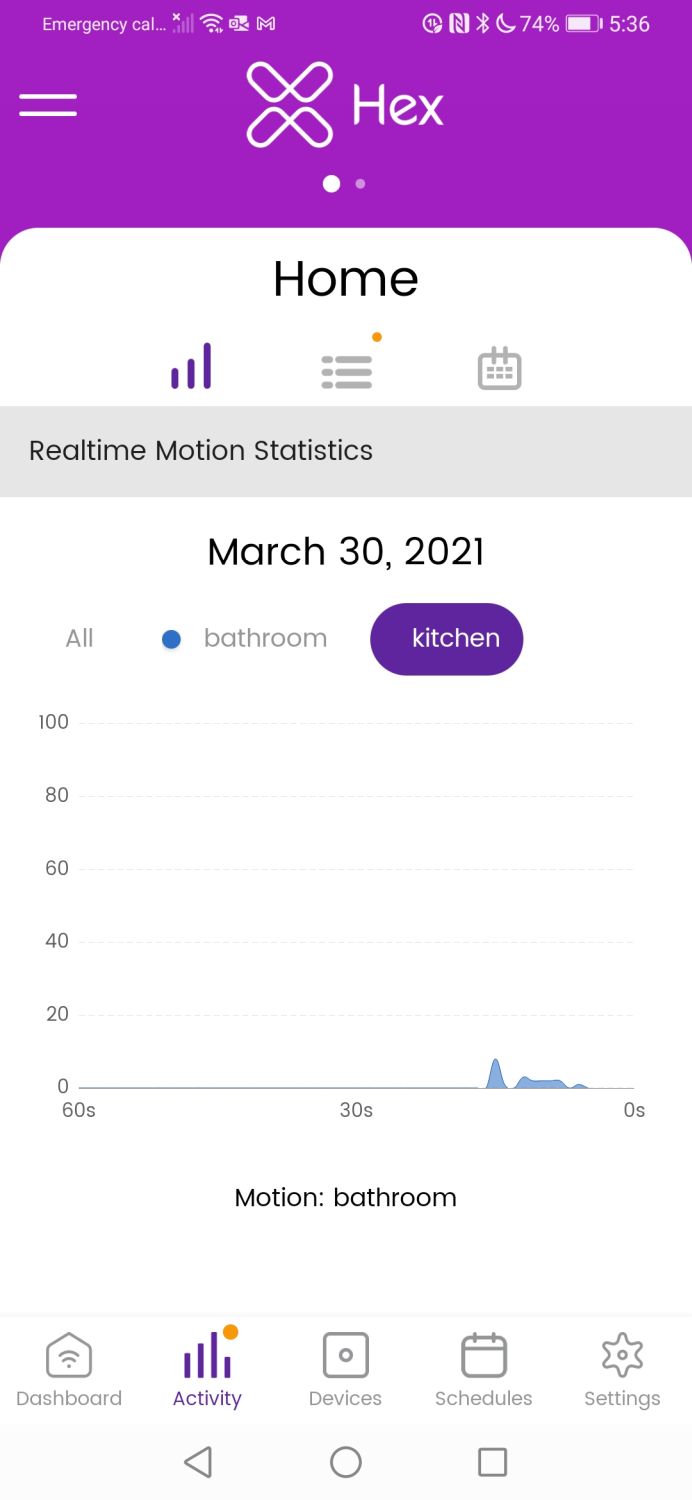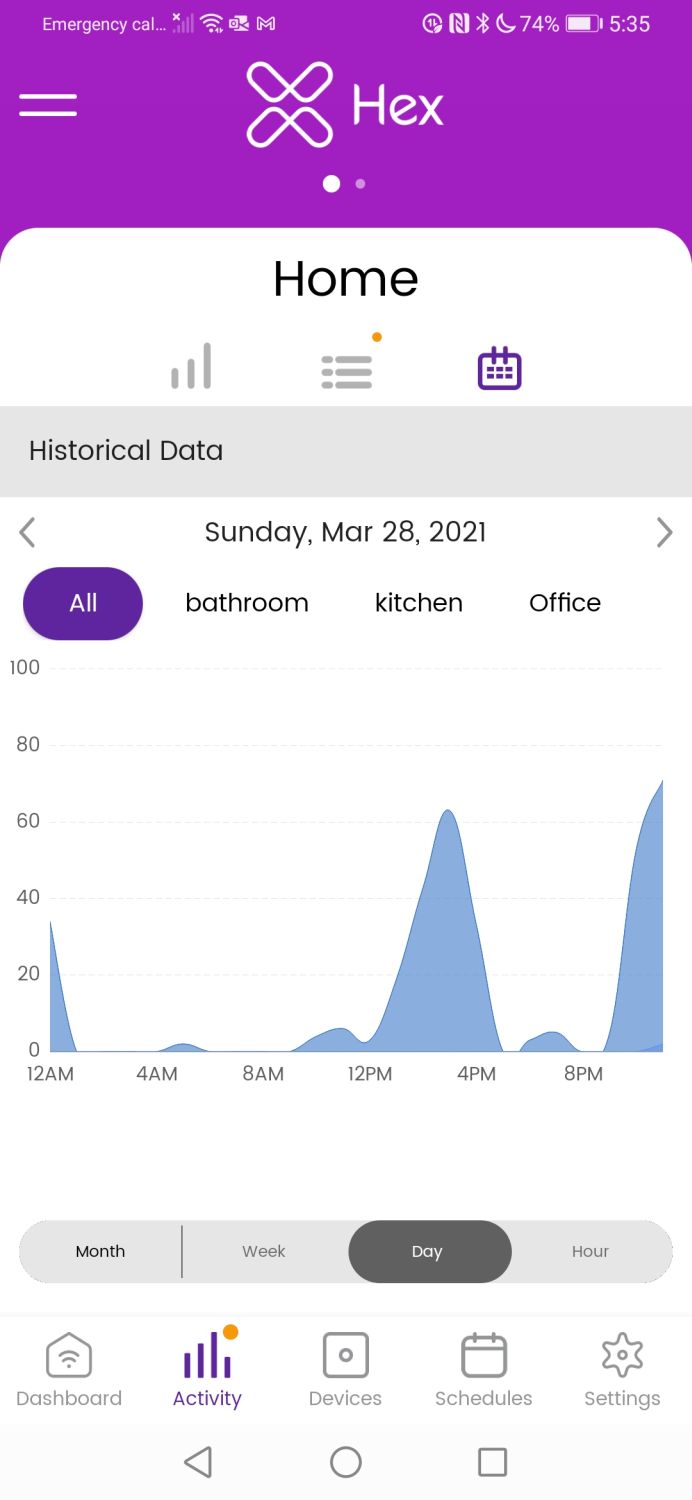I love security cameras that take home privacy seriously, especially those with automatic mechanical shutters that can cover the camera’s lens whether you’re there or not. Even with a sophisticated implementation such as this, some people still don’t trust them enough to watch over their homes. I can’t blame them considering the numerous stories we’ve all heard about cameras being hacked.
That’s why Hex Home should be on your radar. The new DIY home security solutions company caught my attention with its unconventional Wi-Fi sensors that monitor for movement. Think of it as an upgraded version of the traditional motion sensor, but instead of only being able to detect motion in isolated areas, it offers wider coverage for your entire home — while respecting your privacy at the same time. I was skeptical about its effectiveness, but after a couple of weeks trying it out, I’m convinced it’s practical.
Saying goodbye to Big Brother
One thing you have to remember is that a camera’s vision is limited to its field of view — so any movement outside of that range goes undetected. With the Hex Home, its main benefit is that it’s capable of detecting motion everywhere — and it does so without that feeling of someone watching you through a camera.

The kit I checked out consists of a Hex Command base station and two Hex Sense units. Thankfully, you don’t need to hardwire the puck-shaped Hex Command to your home’s Wi-Fi router, so I chose to place it in my home office. Meanwhile, the two Hex Sense units plug in directly to an outlet — acting like a night light as well thanks to the LED ring that lights up around them.
Visitors to your home can feel a bit intimidated by a security camera, so the Hex Home aims to put people at ease because there’s technically no invasive camera lens watching over them. This removes the possibility of a hacker somehow obtaining footage of the inside your home, or worse yet, taking a peek at what you’re doing without your knowledge. In that sense, there’s nothing for a hacker to use for ransom like in previous instances where people were blackmailed.
Harnessing Wi-Fi for motion detection
The concept of harnessing Wi-Fi for motion detection may have seemed far-fetched to me a few years back, but it has been gaining steam. I’ll admit, I was skeptical myself, but that changed after my experience with Hex Home. So, how does this magic work?
The system uses artificial intelligence (A.I.) to measure and detect variances in the Wi-Fi waves bouncing around the home. From there, disruptions in the waves will notify users through the Hex Home app. The visualization of these wave disruptions are interesting and shown in the app in real time via a bar graph indicating peaks and valleys.
If I stand really still, I tend to see very little movement in the graph, but walking at a normal pace immediately shows a peak, so if the system were armed, I would not only get a notification in the app, but the sirens embedded in the Hex Sense units would go off. For those with pets, you can adjust the system’s sensitivity to filter out movement from smaller pets, robot vacuums, and moving fans.
Oh, the places it can go
Let me be forthright about one thing: I don’t intend on ditching my security cameras, even the ones inside of my apartment. They have a level of usefulness that I appreciate, like being able to check up on my cats when I’m away — or making sure that the oven was turned off. But I also understand the privacy advantages and whole home coverage of Hex Home.

In that respect, what appeals to me is that it covers areas where I wouldn’t necessarily have a camera in — like the bedroom or bathroom. While they’re largely considered out of bounds for cameras, if an intruder were somehow to access those rooms through their respective windows, I can be assured that I would know thanks to the Hex Home.
Of course, there are some challenges with this new system. First of all, a power outage will render it inoperable — so if that happens, it leaves you vulnerable. With other home security systems, their command base stations tend to have battery and cellular backup, which keeps them operating for a period of time during. And then there’s the cost.
It’s an issue I need to talk about, especially given how this implementation is relatively new. Searching around right now, the average starter kit for most DIY home security systems, like Ring Alarm, starts at $200. The Hex Home will launch soon with an MSRP of $200 for the three-piece kit I checked out, but early backers can snag it with a pledge of $99 through Kickstarter.
Editors' Recommendations
- Smart homes without Wi-Fi: Huge possibilities or roadblocks?
- Researchers have found a way to extend Wi-Fi ranges by almost 200 feet






